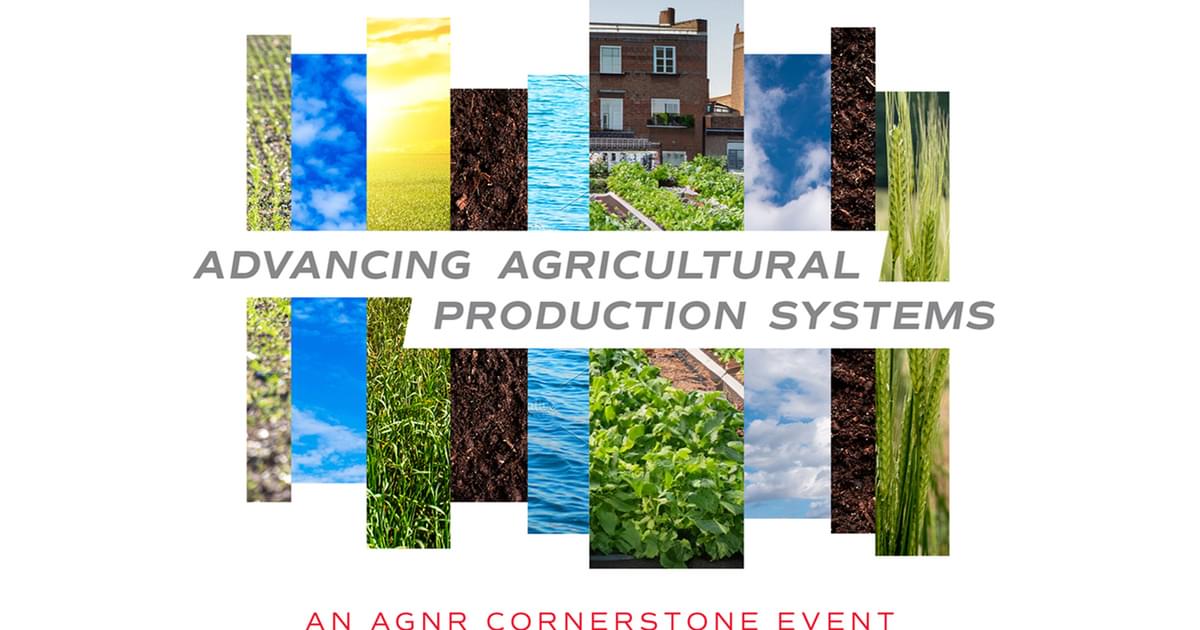
Join the College of Agriculture & Natural Resources
Celebrating and Building Partnerships for Sustainable Agricultural Production Systems

The College of Agriculture & Natural Resources is pleased to invite you to a full day of engagement centered around our strategic initiative: Advance Innovative, Profitable, and Sustainable Agricultural Production Systems.
We are excited to welcome partners, thought leaders, and our community to participate in discussions and collaborations on technologies, opportunities, and solutions that will contribute to a bright future for Maryland agriculture.
Keynote Speaker: Randy Day
Randy Day, former CEO of Perdue Farms, the 103-year-old, family-owned company and the fourth-largest producer of chicken products in the United States, will be headlining the event.
SDGs, Targets, and Indicators
-
Sustainable Development Goal 2: Zero Hunger
- Target 2.4: By 2030, ensure sustainable food production systems and implement resilient agricultural practices that increase productivity and production, that help maintain ecosystems, that strengthen capacity for adaptation to climate change, extreme weather, drought, flooding and other disasters, and that progressively improve land and soil quality.
- Indicator 2.4.1: Proportion of agricultural area under productive and sustainable agriculture.
- Indicator 2.4.2: Average income of small-scale food producers, by sex and indigenous status.
-
Sustainable Development Goal 12: Responsible Consumption and Production
- Target 12.2: By 2030, achieve the sustainable management and efficient use of natural resources.
- Indicator 12.2.1: Material footprint, material footprint per capita, and material footprint per GDP.
Analysis
1. Which SDGs are addressed or connected to the issues highlighted in the article?
The article addresses or connects to two Sustainable Development Goals (SDGs): SDG 2: Zero Hunger and SDG 12: Responsible Consumption and Production.
2. What specific targets under those SDGs can be identified based on the article’s content?
Based on the article’s content, the specific targets that can be identified are:
– Target 2.4: By 2030, ensure sustainable food production systems and implement resilient agricultural practices.
– Target 12.2: By 2030, achieve the sustainable management and efficient use of natural resources.
3. Are there any indicators mentioned or implied in the article that can be used to measure progress towards the identified targets?
Yes, there are indicators mentioned or implied in the article that can be used to measure progress towards the identified targets. For Target 2.4 under SDG 2, the article mentions the need to discuss and collaborate on technologies, opportunities, and solutions to ensure a bright future for Maryland agriculture. This implies the need for indicators such as the proportion of agricultural area under productive and sustainable agriculture (Indicator 2.4.1) and the average income of small-scale food producers (Indicator 2.4.2). For Target 12.2 under SDG 12, the article emphasizes the importance of sustainable agricultural production systems. This implies the need for indicators such as material footprint, material footprint per capita, and material footprint per GDP (Indicator 12.2.1).
SDGs, Targets, and Indicators
| SDGs | Targets | Indicators |
|---|---|---|
| Sustainable Development Goal 2: Zero Hunger | Target 2.4: By 2030, ensure sustainable food production systems and implement resilient agricultural practices that increase productivity and production, that help maintain ecosystems, that strengthen capacity for adaptation to climate change, extreme weather, drought, flooding and other disasters, and that progressively improve land and soil quality. |
|
| Sustainable Development Goal 12: Responsible Consumption and Production | Target 12.2: By 2030, achieve the sustainable management and efficient use of natural resources. |
|
Behold! This splendid article springs forth from the wellspring of knowledge, shaped by a wondrous proprietary AI technology that delved into a vast ocean of data, illuminating the path towards the Sustainable Development Goals. Remember that all rights are reserved by SDG Investors LLC, empowering us to champion progress together.
Source: calendar.umd.edu

Join us, as fellow seekers of change, on a transformative journey at https://sdgtalks.ai/welcome, where you can become a member and actively contribute to shaping a brighter future.





